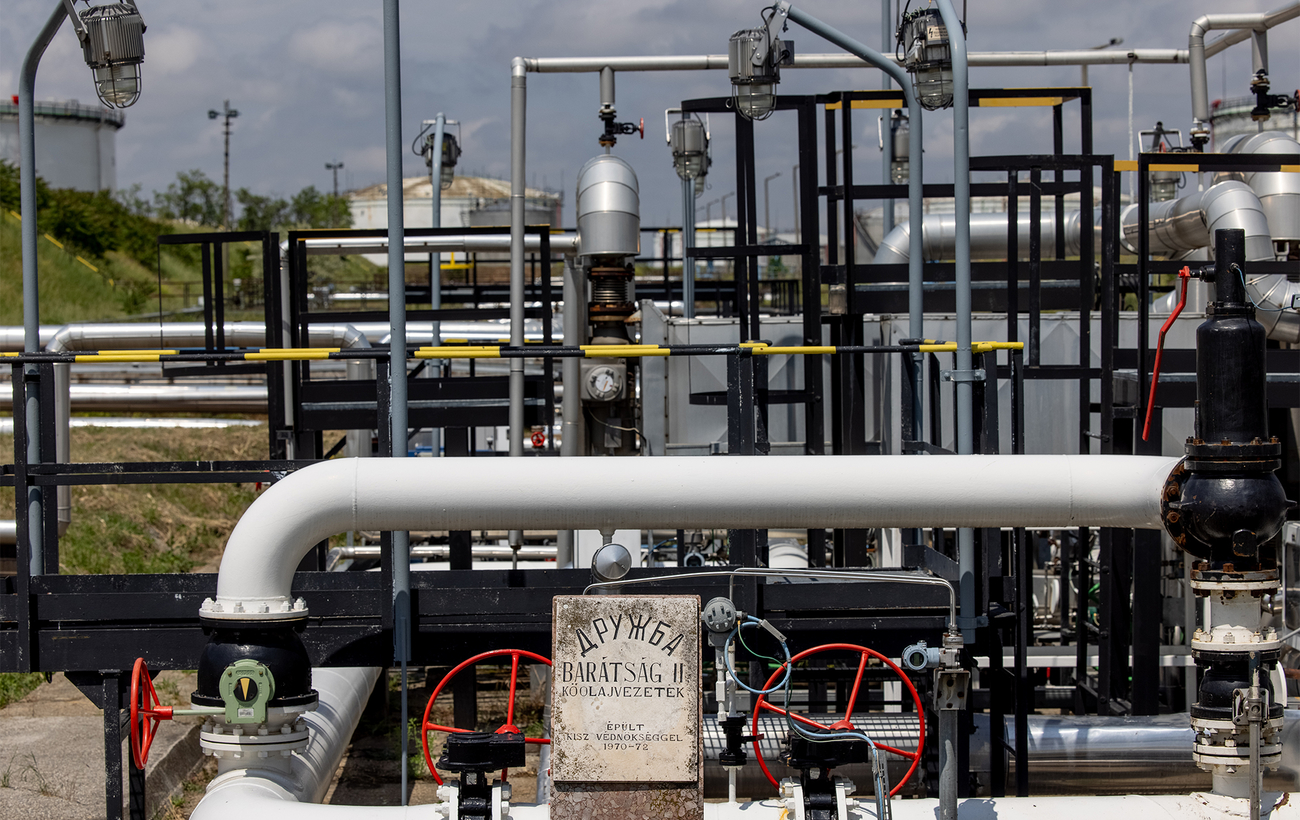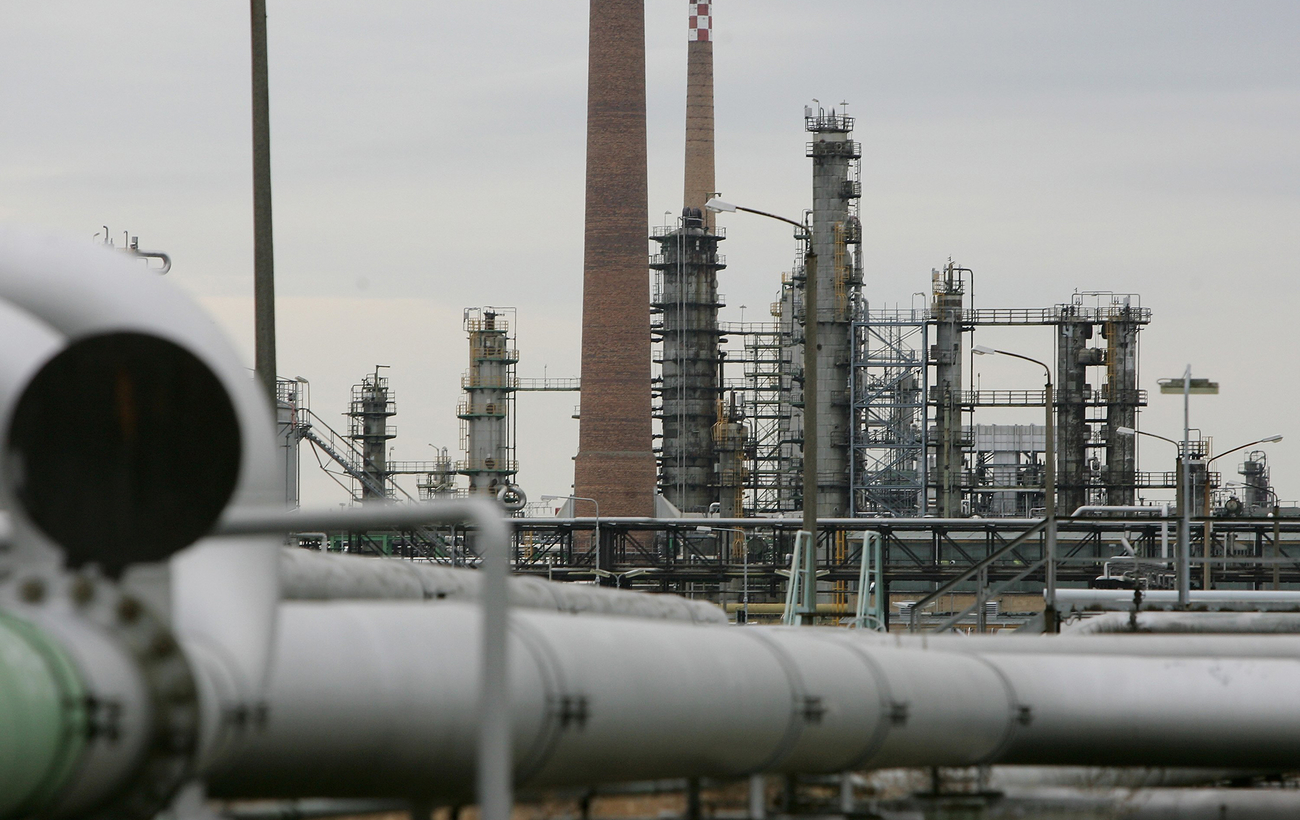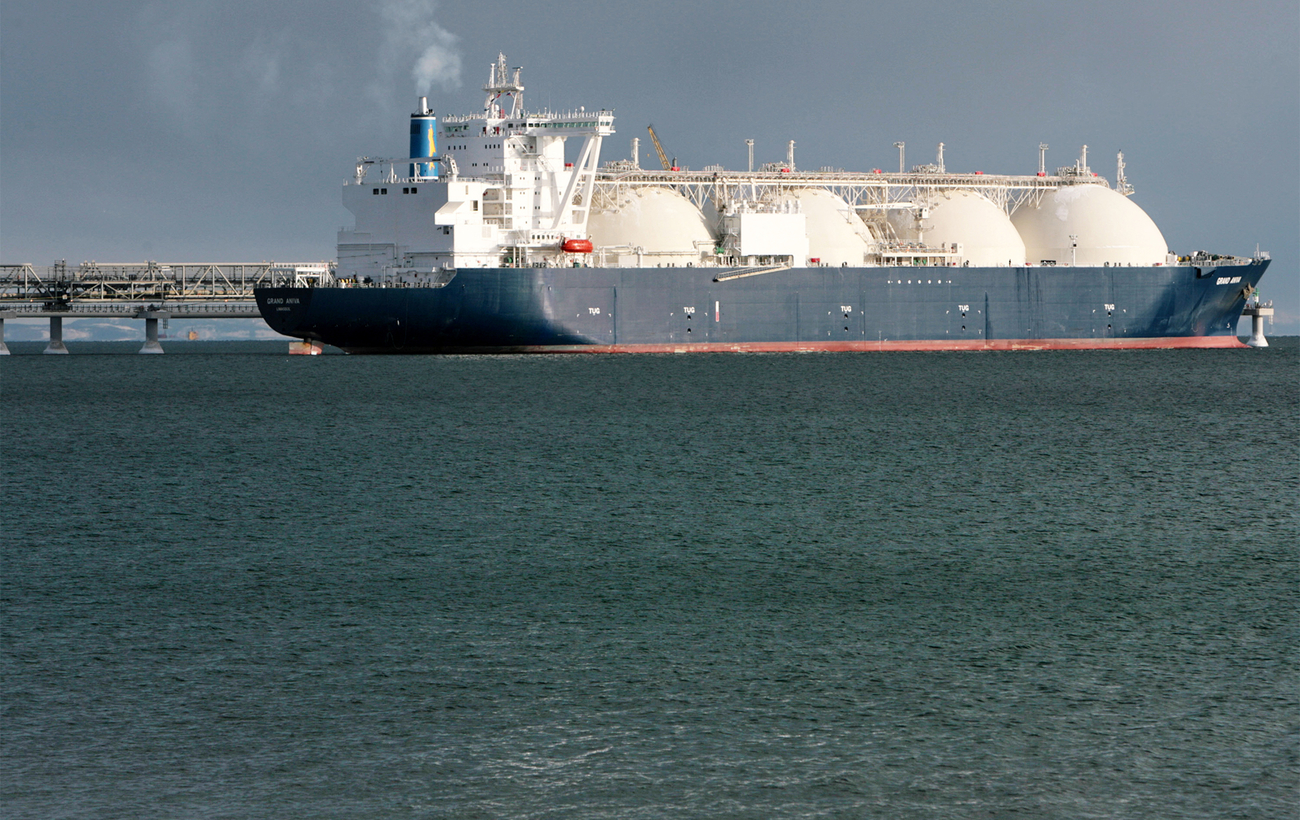Drifting away from Moscow: How Russia lost Europe's oil market and who took over
 Photo: Gas station of the Russian private company LUKOIL in Czechia (Getty Images)
Photo: Gas station of the Russian private company LUKOIL in Czechia (Getty Images)
Until 2022, Russia was one of the largest suppliers of oil and gas to EU countries. With the start of a full-scale invasion of Ukraine, it has significantly lost its position. RBC-Ukraine examines who in Europe continues to purchase Russian oil and gas, the factors that have led to the discovery of new suppliers, and which countries have taken Russia's place.
Key questions:
- How has Russia's share of the European hydrocarbon market declined?
- Who continues to buy Russian oil and gas?
- How has Russian fuel been replaced by suppliers on the other side of the Atlantic?
- Has liquefied gas been able to take the place of traditional pipeline supplies?
- Which country has benefited most from Russia's losses in Europe?
Russia's full-scale invasion of Ukraine in February 2022 triggered sanctions by the European Union against Russian oil and gas. Since then, 19 sanction packages have been adopted. They have halted imports of Russian oil products and significantly reduced Europe's dependence on oil and gas from Russia.
In early October, EU member states' ambassadors agreed on a plan to completely phase out Russian hydrocarbons by 2028, despite opposition from Hungary and Slovakia. As of the end of October, according to Reuters, the legal basis for implementing this plan was being prepared.
Oil player behind the scenes
Since 2022, the EU has significantly restricted imports of Russian pipeline oil and completely stopped oil supplies from Russia by sea. As a result, Russia's share in the structure of oil imports to the EU has fallen from almost 29% in 2021 to 2% in the first quarter of 2025. Russian oil exports to the EU from January 2022 to August 2025 (inclusive) decreased from 3.8 to 0.2 million barrels per day, according to data from the Kyiv School of Economics.
The sanctions have almost succeeded in driving Russian crude oil out of the EU market. Even the exemptions introduced in 2022 for the plants of the Russian private company Lukoil in Romania have been abolished. The only countries that continue to stubbornly buy Russian oil to this day are Hungary and Slovakia.
Behind these supplies is a single company that owns oil refineries in both countries. "It is not Slovakia or Hungary that receives Russian oil, but the private Hungarian company MOL," explains Hennadii Riabtsev, an energy expert.
And, according to him, the question immediately arises as to why a private entity receives advantages that no other European company has, and how EU antitrust authorities view this situation.
The route of Russian oil to Hungary and Slovakia runs through Ukraine via the Druzhba oil pipeline, which ceased operations due to Ukrainian Defense Forces strikes on oil pumping stations on Russian territory.
 Photo: Hungary and Slovakia continue to receive Russian oil via the Druzhba pipeline (Getty Images)
Photo: Hungary and Slovakia continue to receive Russian oil via the Druzhba pipeline (Getty Images)
Kyiv has long advocated for a halt to these supplies, but Budapest and Bratislava argue that they have no access to the sea and no alternative means of accessing Russian oil from the pipeline. This is not true, says Oleksandr Sirenko, an analyst at the consulting company NaftoRynok.
For example, Hungary has the option of receiving oil via pipeline from a terminal on the Adriatic coast. "They have a pipeline that goes to a sea terminal. It is not as powerful as Druzhba, but it is still an alternative," the expert comments, citing the example of Czechia and Austria, which also do not have direct access to the sea but have been able to replace Russian oil barrels.
The zealous defense of Russian suppliers by the governments of Viktor Orbán and Robert Fico is explained by the low prices they offer. "They just don't want to give up cheap oil, and the only cheap oil available now is from terrorists," adds Sirenko.
Recently, the joint venture between MOL and the Russians was hindered by the United States' stance. At the end of October, Donald Trump's administration imposed tough sanctions on Rosneft and Lukoil. This move prompted Hungarian Prime Minister Viktor Orbán to ask Trump to make an exception for Hungary, but Budapest has so far been refused. This issue will be the subject of a meeting between Trump and Orbán, scheduled for November 7.
Despite supplies to Hungary and Slovakia, Russia has lost its position as a key player in the EU oil market. In the second quarter of this year, the largest suppliers of crude oil to the EU were Norway (15% of imports), the US (14%), and Kazakhstan (almost 13%). A lot of raw materials are also supplied from Africa, Saudi Arabia, and Brazil. The structure of oil imports to the EU is quite diversified, according to the European Commission report.
The oil market has long been global, meaning that a tanker on the high seas can be redirected to any port. "Access to the sea works wonders," says Sirenko, adding that the route to the EU market is equally open to ships from Mexico and tankers from the Persian Gulf.
European companies are free to buy oil from the largest producers, such as the US and Saudi Arabia.
Diesel fuel from Texas
In early February 2023, the EU completely abandoned petroleum products imported directly from Russia. Petroleum products made from Russian oil by third countries remain a significant problem. Such suppliers include India and Türkiye, for example. Traders are making many fictitious deals, resulting in Swiss and Cypriot oil or Swiss petroleum products, says Hennadii Riabtsev.
"Europeans began to close this loophole only in the 18th and 19th packages of sanctions, according to which they will not buy petroleum products made from Russian oil, regardless of the number of intermediaries between Russia and the end trader," the expert explains.
Indian fuel, produced largely from Russian oil, has replaced Russian petroleum products in southern Europe, says Oleksandr Sirenko.
"In the north of the EU, there are many offers from the US. Tankers depart from Texas to the ARA hub (the ports of Amsterdam, Rotterdam, and Antwerp - ed.), where the fuel is transferred to smaller tankers and enters the EU market," Sirenko says, adding that petroleum products from ports in the Gulf of Mexico have been supplied to the Ukrainian market for the third year in a row.
 Photo: Europe receives fuel produced at refineries overseas (Getty Images)
Photo: Europe receives fuel produced at refineries overseas (Getty Images)
"Diesel fuel from Texas is supplied to Ukraine and sold at our gas stations," the analyst notes, adding that if it is profitable to transport American resources even to Ukraine, then the economics of supplying this fuel throughout Europe are all the more justified.
Premium gas market
In 2021, Russia supplied gas to Europe in five ways: four pipelines and by sea. From 2022 to the present (under various circumstances), three gas pipelines have been shut down: Nord Stream in the Baltic Sea, the Yamal-Europe gas pipeline, which passes through Belarus, and the Urengoy-Pomary-Uzhhorod gas pipeline, through which Russian gas was transported through Ukraine until early 2025.
The share of Russian pipeline gas in the EU's import structure in 2024 compared to 2021 has decreased from 40% to 11%, according to data from the European Council.
Today, Russia continues to transport gas to Europe via only one gas pipeline - the Turkish Stream, which runs along the bottom of the Black Sea and exits on the European coast of Türkiye. The consumers of this gas are the same as Slovakia and Hungary, as well as Serbia, says gas market analyst at ExPro Consulting Mykhailo Svyshcho.
"This is the only pipeline route for Russian gas. This year, the volume of transportation will be about 16 billion cubic meters," the analyst says, adding that deliveries along this route from 2021 to 2024 have increased from 12.2 to 16.3 billion cubic meters.
Russia remains a significant supplier of liquefied natural gas (LNG), which is transported by sea in special tankers. Russia's share in the structure of LNG imports to the EU in the second quarter of this year was almost 13% (second place in terms of volume), according to data from the European Commission. Oleksandr Sirenko is convinced that this gas should be the subject of the next sanctions package.
However, the United States has become the largest supplier of liquefied gas to the EU, with a share of almost 58% in the second quarter. This is due to two factors. First, the US is increasing LNG production, and second, China has completely stopped buying American liquefied gas since February this year. "The resource that did not go to China went to Europe, where demand is high and prices are higher than in Asia," comments Mykhailo Svyshcho.
He predicts that the US will increase its presence in the European gas market. Qatar also wants to compete seriously for this market and plans to commission a powerful LNG terminal in 2027. This Persian Gulf country, as well as African countries (Algeria, Nigeria, and Angola), are already significant suppliers of liquefied gas to the EU.
It is LNG supplies that have replaced the significant drop in Russian pipeline gas volumes. "European demand for LNG has grown enormously," says Oleksii Lastovets, head of trading at the international company Axpo Ukraine, during the RBC-Ukraine conference "Energy that keeps Ukraine going," adding that a large number of LNG terminals are being built in virtually all countries with access to the sea.
Norway, Algeria, and Libya also remain significant gas suppliers to the EU.
US expansion in the European market
Although the EU lost huge hydrocarbon supplies from Russia in 2022, nothing terrible happened. Companies were able to quickly find new suppliers, as Europe's developed maritime infrastructure makes it possible to get a tanker from anywhere in the world.
"It is quite difficult to say where a shipment of oil or gas came from. It could be an American trader transporting Malaysian gas or a Swiss trader trading Saudi oil," explains Hennadii Riabtsev, describing the peculiarities of international energy trading.
Moreover, the European market is a market of wealthy consumers who are willing to pay a higher price. Any supplier would like to be present on this market, which is why, for example, the US has never hidden its interest in increasing its presence.
 Photo: In recent years, liquefied natural gas has been conquering the European market (Getty Images)
Photo: In recent years, liquefied natural gas has been conquering the European market (Getty Images)
US companies began expanding into the European market with the first sanctions against the aggressor country, comments Oleksandr Sirenko. They have learned to extract large amounts of hydrocarbons thanks to modern technology. Today, the US is the largest oil-producing country and the largest exporter of liquefied natural gas in the world. "American companies need sales, and here the Russians themselves have given them the European market," adds Sirenko.
Russia has lost the positions it has built up in Europe over decades through political lobbying, bribery of government officials, and outright dumping on the markets. "I don't want to speculate, but we're talking about trillions of dollars for decades to come," Sirenko estimates the scale of Russia's losses.
While the Kremlin is guided by absurd imperial ambitions, its place in the European market is being taken by players who think in rational terms and have healthy business interests.

